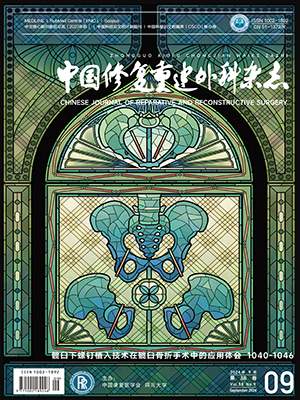OBJECTIVE: To investigate the influence of tissue engineered tendon on subgroup of T lymphocytes and its receptor in Roman chickens. METHODS: The flexor digitorum profundus of the third toes of right feet in 75 Roman chickens were resected and made 2.5 cm defects as experimental model. They were randomly divided into five groups according to five repair methods: no operation (group A), autograft (group B), fresh allograft (group C), polymer combined with allogenous tendon cells (group D), derived tendon materials combined with allogenous tendon cells (group E). The proliferation and transformation of lymphocytes and contribution of CD4+, CD8+, CD28 and T cell receptor (TCR) were detected to study the immune response. RESULTS: The CD4+, CD8+ and TCR of group D and E were increased slightly than that of group B after 7 days, while after 14 days, those data decreased gradually and no significant difference between tissue engineered tendon and autografts (P gt; 0.05), and there was significant difference between fresh allograft and tissue engineered tendon (P lt; 0.05). Lymphocytes transformation induced by conA also showed no significant difference between tissue engineered tendon and autografts (P gt; 0.05). CONCLUSION: Tendon cells are hypoantigen cells, there are less secretion of soluble antigen or antigen chips dropped out from cells. Tissue engineered tendon has excellent biocompatibility.
Citation: QU Yanlong,YANG Zhiming,XIE Huiqi,et al.. THE INFLUENCE OF TISSUE ENGINEERED TENDON ON SUBGROUP OF T LYMPHOCYTES AND ITS RECEPTOR IN ROMAN CHICKENS. Chinese Journal of Reparative and Reconstructive Surgery, 2001, 15(2): 113-117. doi: Copy




